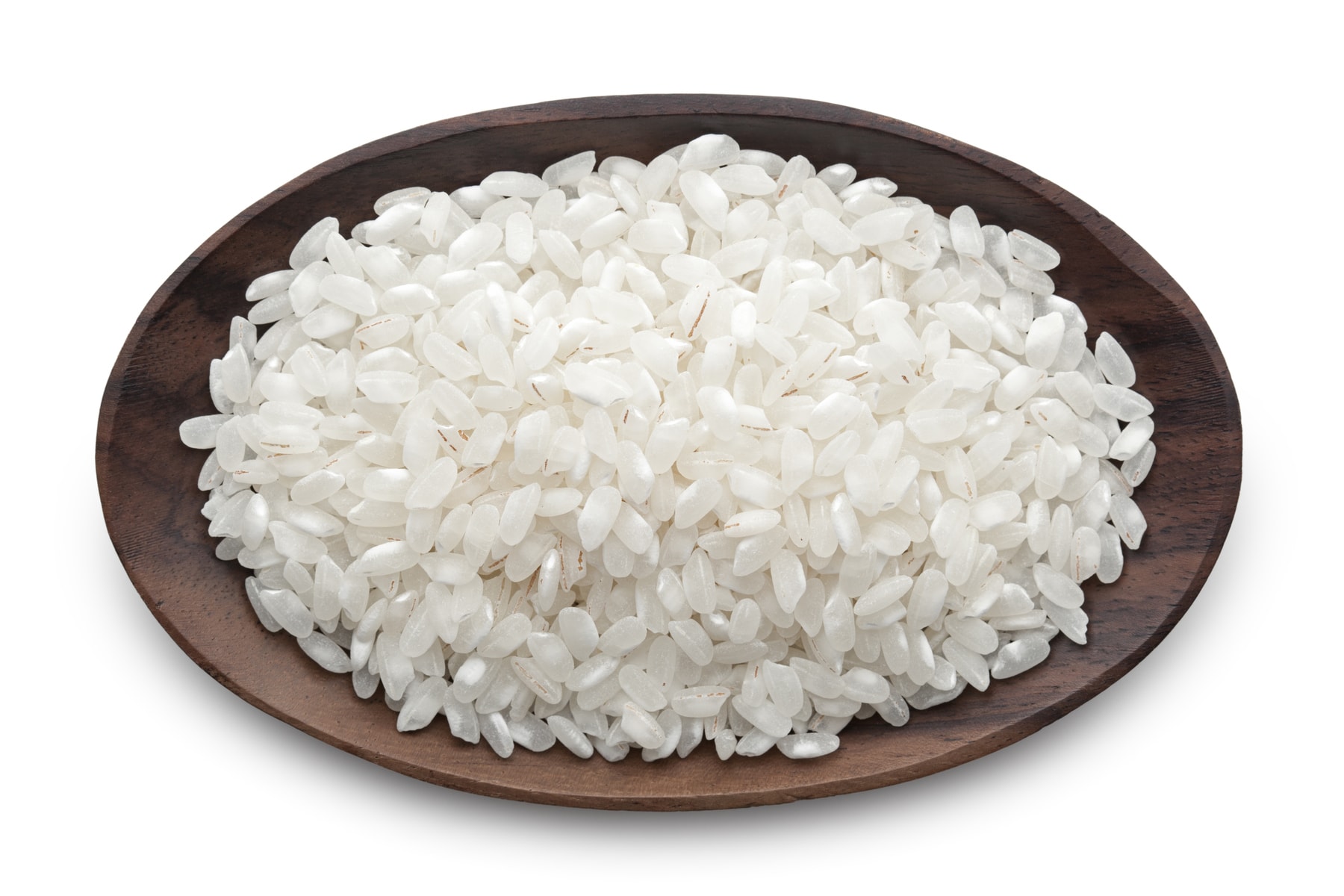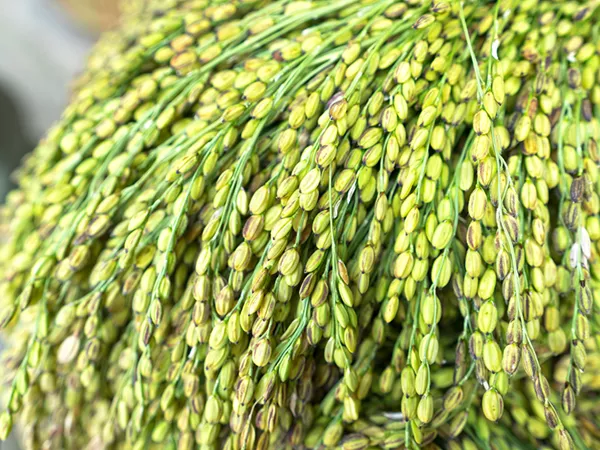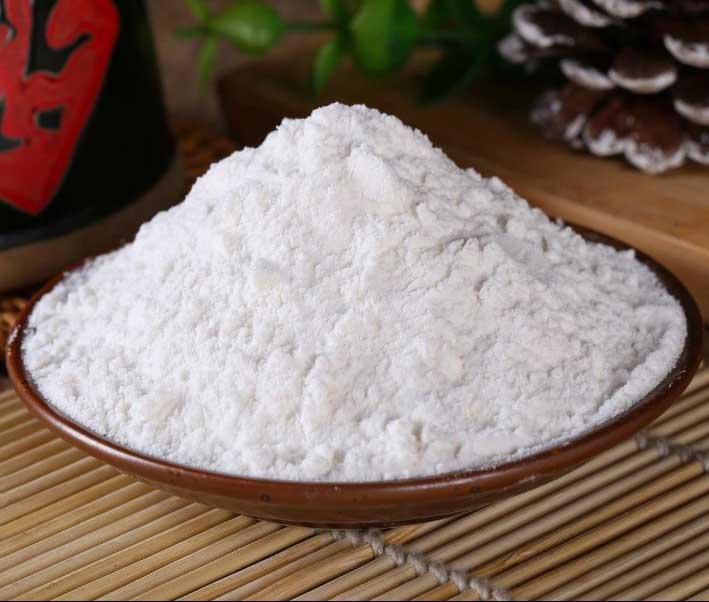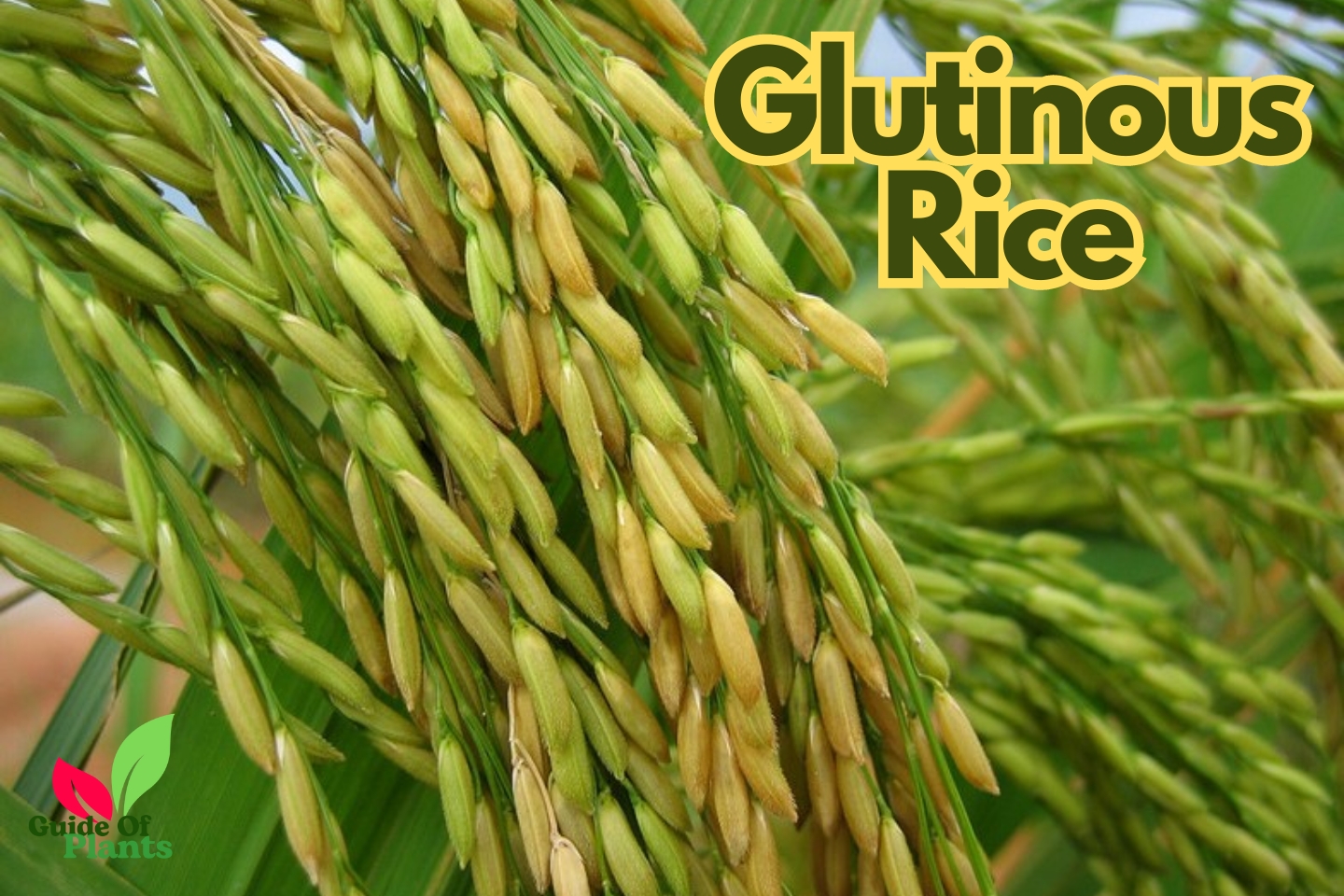Glutinous rice, sometimes referred to as sticky rice or waxy rice, is a unique type of rice that has played an important role as a dietary staple across many Asian cultures for centuries. Known for its sticky texture when cooked, this versatile grain has significance globally as a sustainable crop with the ability to grow in diverse environments. This article will explore the cultivation of glutinous or sticky rice worldwide, its origins and history, and the cultural traditions surrounding sticky rice dishes in different regions.
Table of Contents
Where is Glutinous Rice Grown?
This rice is grown extensively across East and Southeast Asia, especially in countries like China, Japan, Korea, Thailand, Laos, Cambodia, Vietnam, and Myanmar. It is a staple food crop in these regions, with countless local varieties cultivated. In fact, glutinou- rice accounts for more than 90% of total rice production in the Lao PDR and Thailand. It is referred to as khao niao in Thailand and Lao, mochi-gome in Japan, and chikō in Taiwan.
Glutinous is also grown in other parts of Asia including Nepal, Bhutan, northeastern India, and Indonesia. The diverse environments and climates of these countries allow this rice to thrive, from tropical lowlands to mountainous highlands. Unique cultivars like black glutinous-rice and red glutinous-rice are found in Asia.
Outside of Asia, glutinous rice is cultivated in the U.S., mainly in Arkansas, Texas, and California. It represents around 5% of total U.S. rice production. The popularity of Asian cuisine has increased demand for this rice. It’s also grown in areas of Europe and South America.

Also Know About: Crop Farming Unleashed, From Seed to Revolution
Origin of Glutinous Rice
The origin of glutinous or sticky rice can be traced back to prehistoric times in China around 2000 BC. Genetic evidence shows that it was domesticated from wild ancestor varieties. Early records indicate this rice was one of the main cereals of ancient China, cultivated extensively along the Yangtze River.
Glutinous rice later spread from central China to other parts of Asia. For instance, its introduction to Japan was around 100 to 400 AD. In Southeast Asia, rice may have been introduced 2000 years ago and gradually replaced other cereals.
For many Asian communities, the history of this rice is intertwined with cultural traditions. Sticky rice cultivation enabled the development of settled agriculture. Rice was often used as a payment method in ancient China. Today, glutinous remains essential to rituals and festivals across Asia.
The unique properties of glutinous-rice starch make it highly versatile. It can be steamed, boiled, mashed, or ground into rice flour for various foods like desserts, savory sweets, and more. This grain continues to sustain families and communities through its resilience. Looking ahead, innovative uses combined with sustainable practices can ensure this rice remains a staple crop meeting global food needs.
:max_bytes(150000):strip_icc()/sticky-rice-easy-recipe-3217714-hero-01-cd82dea393654c09a9944ef5b7a915be.jpg)
Common Name of Glutinous Rice
Glutinous or sticky rice is known by many names around the world. In China, it is commonly called nuòmǐ or glu̍t-bí in Hokkien dialect. The Japanese call it mochigome, while Koreans refer to it as chapssal. In Thailand and Laos, it is known as khao niao, and Vietnamese call it gạo nếp. Other names include biroin chaul in Assam, India and pulut in Malaysia and Indonesia.
Despite being called glutinous, it does not contain gluten. The name comes from its glue-like, sticky texture when cooked. To avoid confusion, it is also referred to as waxy rice, sticky rice, pearl rice, and sweet rice. By any name, glutinous rice holds significance globally as a staple food.
Special Characteristics of Glutinous Rice
Glutinous rice differs from other rice due to its unique properties. When cooked, it becomes soft and sticky, while long-grain rice remains fluffy. This stickiness enables easy grabbing and dipping with fingers. The rice is also opaque compared to translucent non-glutinous varieties.
Its starch composition lends to the distinctive texture. This rice contains more amylopectin, the branched starch molecule, and less amylose than regular rice. The extra amylopectin gives it cohesiveness when cooked.
In terms of flavor, the rice offers a sweet, nutty taste. Due to the stickiness and sweetness, it is ideal for desserts like rice cakes and puddings. It also complements savory foods as the foundation of dishes like sushi. Glutinous or sticky rice plays an irreplaceable role in the cuisines of many Asian cultures.
Also Know About: Quinoa Cultivation As A Sustainable Crop

Types of Glutinous Rice
Many varieties of this rice exist, from white to black, long-grain to short-grain. White glutinous is the most common type. Black glutinous, known for its deep purple hue and antioxidant properties, is used in Chinese black rice vinegar and Thai desserts. Red and brown glutinous are other pigmented varieties rich in nutrients.
Long-grain glutinous has a length-width ratio higher than 3. Thai jasmine sticky rice is a popular long-grain cultivar with a jasmine aroma. Short-grain glutinous-rice has a lower length-width ratio and plumper grains. Japanese mochi rice is a type of short-grain glutinous-rice. Sweet glutinous-rice, favored for Asian sweets, has the highest amylopectin content.
With diverse types tailored to different cuisines and uses, glutinous-rice shows its versatility as a global food staple. Advances in cultivar development can further enhance the qualities of this unique grain.
Glutinous Rice Cultivation
Cultivating glutinous rice requires specific conditions and techniques to produce the desired sticky texture ideal for rice flour. Glutinous rice thrives in tropical environments with humid, rainy weather. Paddies are flooded to create the wetland conditions it prefers. Planting is done by transplanting seedlings started in nurseries rather than direct seeding.
This rice is sensitive to temperature, needing warm conditions around 21-35°C during the growing period. The fields are kept flooded until the grains start to ripen and turn yellow. Draining the fields at this stage allows the rice to fully ripen.
Harvesting glutinous or sticky rice requires precise timing when the grains reach around 20-25% moisture content. The panicles are hand-reaped with small knives. Bundles of the harvested panicles are allowed to dry further in the sun before threshing to extract the grains.
Post-harvest, glutinous or sticky rice grains need additional drying to reach a moisture level below 14%. Controlled drying helps prevent cracking of the grains which can impact milling quality. The intact grains are essential for making superior quality rice flour.
Milling of the dried grains is tailored to get whole kernel glutinous rice flour. Gentler abrasion removes the outer bran while keeping the starchy endosperm intact. Unlike milled white rice with the germ and bran removed, whole grain glutinous- rice flour retains the full nutrition and sticky attributes crucial for certain foods.
By optimizing growing conditions, harvesting methods and customized milling, glutinous or sticky rice can be cultivated to achieve the unique flour consistency needed. Farmers rely on generations of traditional knowledge combined with modern techniques to produce this gluten-free flour sustaining many cuisines.
Storage and Shelf Life
Proper storage is important for maintaining the quality of this rice flour. Like other whole grain flours, glutinous or sticky rice flour contains natural oils that can cause it to go rancid more quickly than refined flours. Storing the flour in an airtight container in a cool, dry place can help extend its shelf life. Under optimal storage conditions, glutinous or sticky rice flour will stay fresh for 6 to 12 months. The shelf life can be extended by refrigerating or freezing the flour.

Uses in Cooking and Baking
The sticky, chewy texture of this rice flour and glutinous rice balls makes it useful for many Asian dishes. It can thicken sauces and stews or be used to coat meats and vegetables before frying. Glutinous rice flour adds binding and softness to baked goods. It is commonly used in desserts like mochi, rice cakes, puddings and pastries. The slightly sweet flavor complements both savory and sweet recipes. Glutinous or sticky rice flour is also used to make alcoholic beverages in some Asian countries.
Nutritional Profile
Compared to white rice flour, whole grain glutinous or sticky rice flour is higher in fiber, vitamins and minerals. It contains vitamin B vitamins like thiamine, niacin, and folate. Minerals include iron, zinc, magnesium and phosphorus. The brand provides soluble and insoluble fiber for digestive health. Glutinous or sticky rice is gluten-free, making it safe for those with celiac disease or gluten intolerance. The whole grain flour has a lower glycemic index, which helps control blood sugar levels.
Sourcing and Buying
Glutinous rice flour can be found in Asian grocery stores, health food stores and online. When buying, look for whole grain, unmilled flour that retains the full nutrition of the grain. Examine that the flour looks finely ground but still speckled with bran. High quality glutinous rice flour will have a sweet, nutty aroma. Check the expiration date and store properly once opened. Buying from brands that stone mill or cold press the grains preserves nutrients.
Also Know About: Brassica Rapa

Glutinous Rice Flour
Glutinous or sticky rice is transformed into flour through careful milling processes tailored for its unique properties. After harvest, the rice is dried then milled whole to retain nutrients. Gentler abrasion removes the hull while keeping the sticky starch endosperm intact. The grains are ground into a fine, soft flour perfect for gluten-free baking.
The chewy, stretchy qualities of this substitute glutinous rice flour it widely used in dumplings, pastries, and doughs. It is a key ingredient in mochi, giving the rice cakes their distinctive sticky yet soft texture. Asian cuisines use it for sweet rice balls, rice noodles, and wrapping savory fillings. Glutinous or sticky rice flour adds binding and texture to baked goods like pastries, cookies and cakes. It can also thicken stews, sauces, stir-fries, and desserts.
Milling Process
The milling process for this rice flour is designed to retain the whole grain and its natural oils. Traditionally, the rice was ground with stone mills which apply minimal heat to protect nutrients. Today, some commercial mills use steel rollers, though stone grinding is still preferred. The grains pass through just once to prevent over-milling. The resulting flour feels soft and powdery.
Texture and Binding Properties
When substituted for wheat flour, glutinous or sticky rice flour imparts a soft, stretchy texture with natural binding abilities. The higher amylopectin content allows it to hold together baked goods and form doughs without added gums or stabilizers. Glutinous rice flour has more clinging properties than non-waxy rice flours. This makes it ideal as a thickener for stir-fries, stews, sauces and soups.
Flavor Profile
Beyond the distinctive texture, sticky rice flour also provides flavor to recipes. It has a slightly sweet, nutty taste that complements both savory and sweet ingredients. The whole grain flour contributes a more complex flavor compared to refined white rice flours. When combined with coconut milk and spices, glutinous rice flour makes a fragrant base for Thai desserts. It also balances out stronger flavors when used as a coating or binder.
Benefits and Significance of Glutinous Rice
Beyond culinary uses, sticky rice provides nutrition and promotes food security. It is high in B vitamins, minerals, and fiber compared to milled white rice. The whole grain flour has a lower glycemic index, benefiting blood sugar control. Glutinous rice does not contain gluten, making it safe for people with celiac disease or gluten intolerance.
For centuries, glutinous or sticky rice cultivation has sustained many Asian communities. It thrives in flooded paddies with relatively few inputs needed, contributing to agricultural sustainability. Glutinous rice is resilient to biotic and abiotic stresses. Annual localization and seed conservation helps maintain productive varieties.
As a locally grown staple crop, purple glutinous rice flour provides steady income for smallholder farmers while preserving food traditions. The unique properties of this gluten-free whole grain will continue promoting health, sustainability, and food security into the future.
Also Know About: Cash Crops

Conclusion
Glutinous or sticky rice has unique properties that have made it a staple crop across Asia for millennia. This versatile grain is now grown and enjoyed globally, from the rice terraces of the Himalayas to the paddies of Arkansas. We explored the many regions cultivating glutinous rice, its origins in ancient China, and the traditional practices involved in its cultivation.
This rice can be transformed into a nutritious, gluten-free flour with binding abilities ideal for baking and cooking. Beyond being a flavorful ingredient, glutinous rice promotes food security, sustainable agriculture, and rural economies. Its resilience and diversity will allow it to endure as a mainstay food source. With deep roots in cultures across Asia and rising popularity worldwide, glutinous rice has global significance that should be appreciated. Recognizing this grain’s past, present, and future illustrates the interconnectedness of global food traditions.




